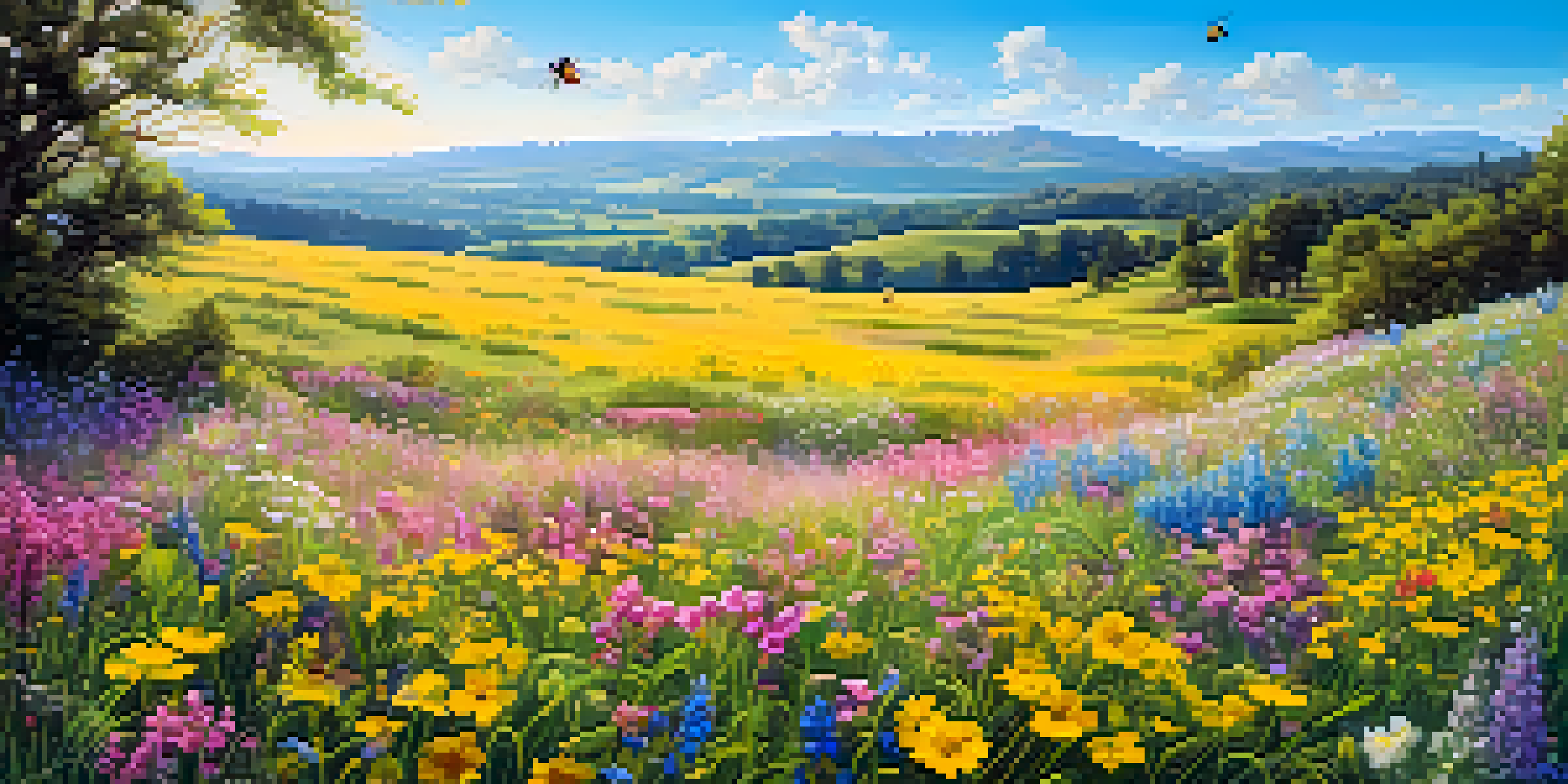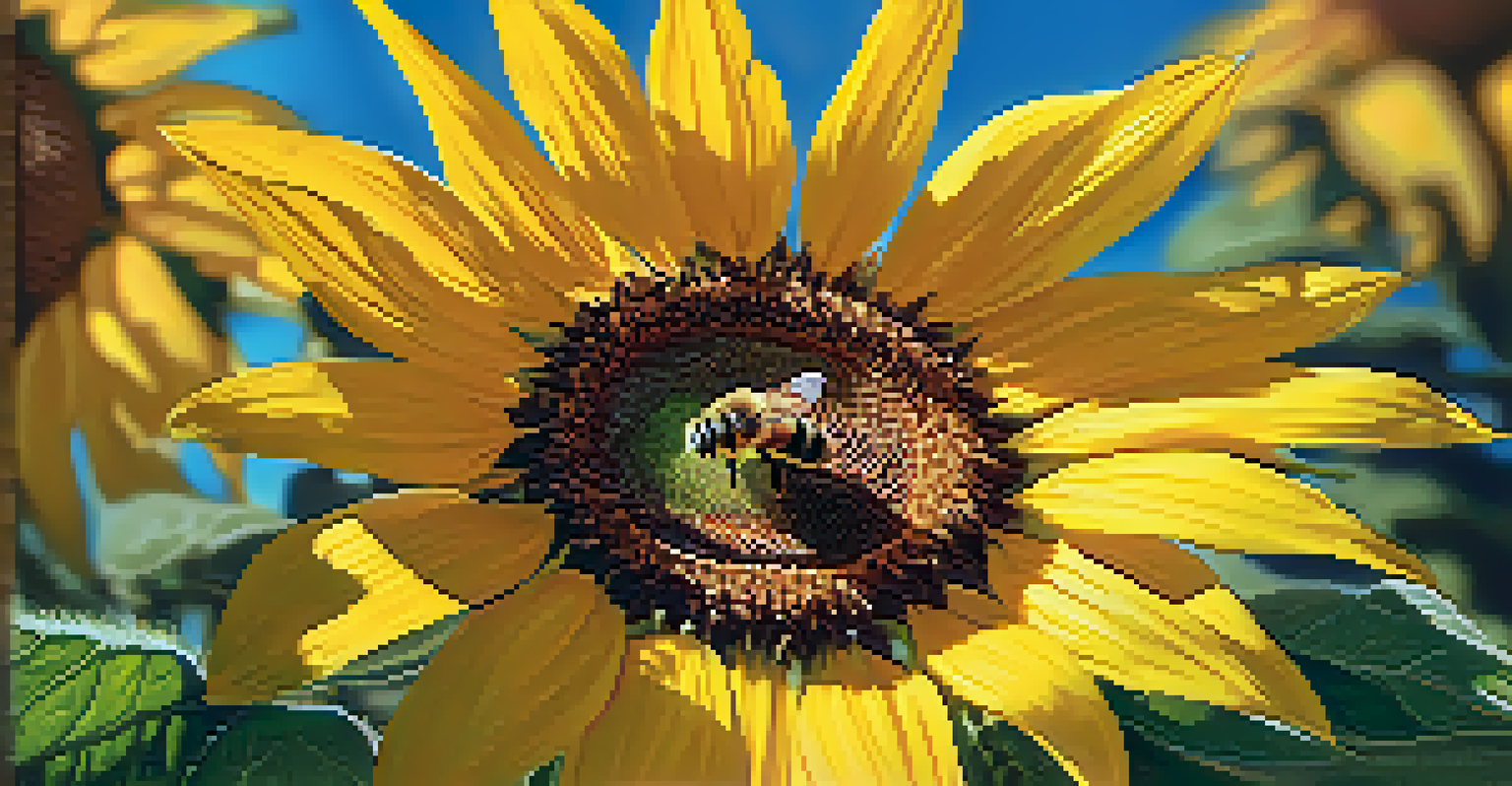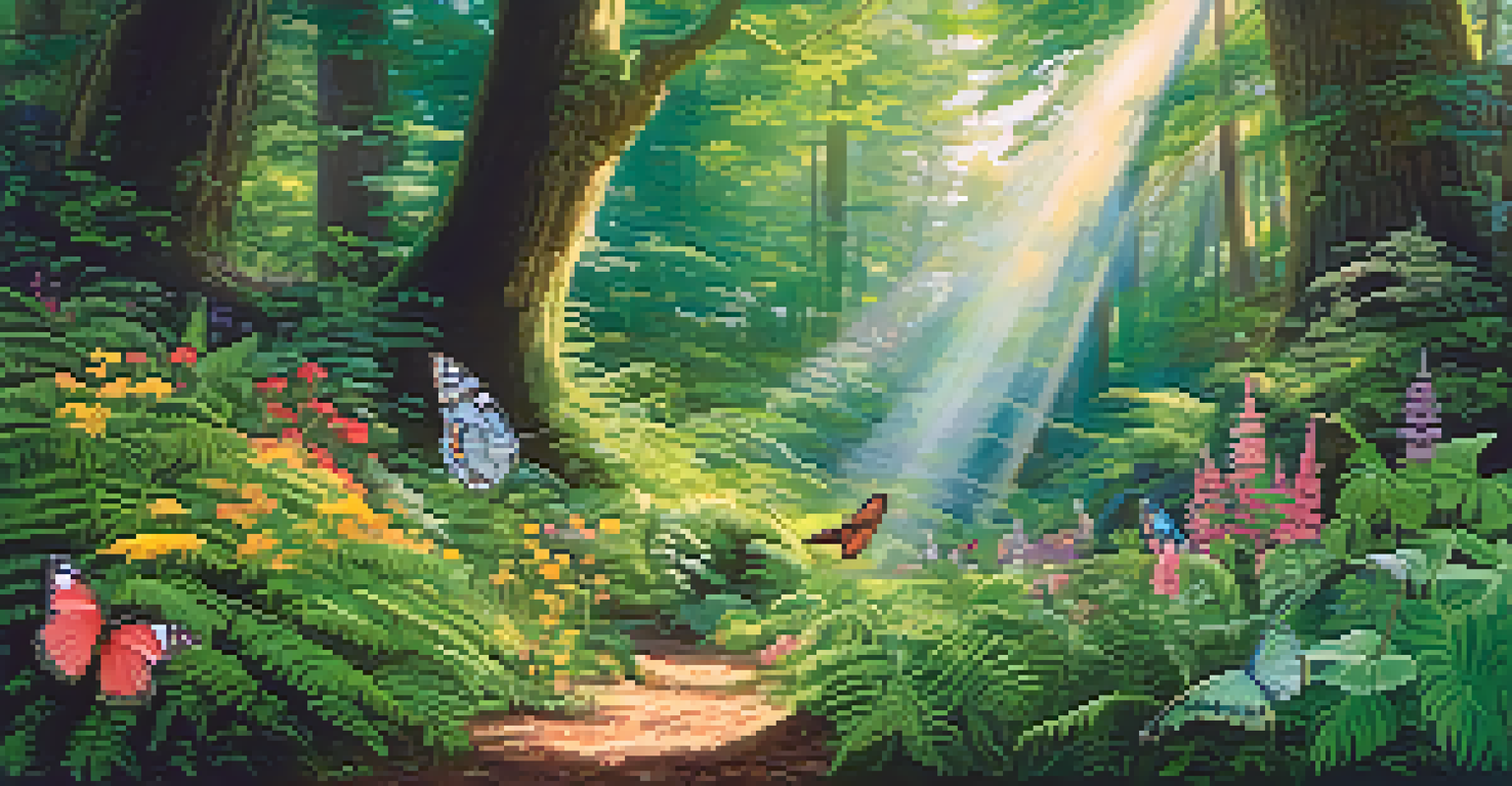Biodiversity's Role in Pollination and Plant Reproduction

What is Biodiversity and Why It Matters
Biodiversity refers to the variety of life on Earth, encompassing different species, ecosystems, and genetic variations. It plays a crucial role in maintaining the balance of our ecosystems. Higher biodiversity typically means healthier ecosystems, which can withstand environmental changes and support various life forms.
Biodiversity is the foundation of ecosystem services, which provide us with food, clean water, and air.
From microorganisms in the soil to towering trees in forests, each component contributes to the intricate web of life. This web is essential for processes such as nutrient cycling, climate regulation, and, importantly, pollination. Without biodiversity, these systems can become fragile and less resilient to disturbances.
In essence, biodiversity is like the rich tapestry of colors in a painting; each thread plays a vital role in creating a beautiful and functional piece. As we delve deeper into the role of biodiversity in pollination, you'll see how interconnected these concepts truly are.
The Importance of Pollinators in Ecosystems
Pollinators, like bees, butterflies, and birds, are vital players in the reproduction of many plants. They assist in the transfer of pollen from one flower to another, facilitating fertilization and the production of seeds. This process not only helps plants reproduce but also ensures genetic diversity, which is critical for adapting to changing environments.

Imagine a world without pollinators; many of our favorite fruits, vegetables, and nuts would simply vanish. In fact, it's estimated that one out of every three bites of food we consume depends on pollination. This highlights how pollinators are not just beneficial but essential to our food systems and overall survival.
Biodiversity Supports Ecosystem Health
Higher biodiversity leads to healthier ecosystems that can adapt to environmental changes.
Moreover, pollinators contribute to the beauty of our landscapes, supporting flowering plants that create habitats for other species. The loss of these creatures would not only impact food production but also the ecological balance that sustains life on Earth.
How Biodiversity Affects Pollinator Populations
The variety of species in an ecosystem directly influences the health and stability of pollinator populations. Diverse habitats provide more resources, such as food and nesting sites, which are crucial for pollinators like bees and butterflies. When a single species dominates an area, it can lead to a decline in pollinator diversity, making ecosystems more vulnerable.
If we lose the pollinators, we lose the food, and if we lose the food, we lose the people.
For example, a diverse range of flowering plants blooming at different times ensures that pollinators have access to food throughout the seasons. This not only supports their survival but also enhances the overall productivity of the ecosystem. In contrast, monocultures (areas with a single crop) can lead to food shortages for pollinators, impacting their populations.
Thus, maintaining biodiversity is not just about protecting different species; it's about fostering a robust environment where pollinators can thrive. This interconnectedness shows just how vital biodiversity is for sustaining healthy pollinator communities.
Plant Reproduction: The Role of Pollination
Pollination is a key step in plant reproduction, allowing plants to produce seeds and fruits. During the pollination process, pollen grains from the male parts of the flower (anthers) are transferred to the female parts (stigmas), leading to fertilization. This is crucial for the survival and continuation of plant species.
Different plants have evolved unique adaptations to attract specific pollinators. For instance, bright colors and sweet scents lure bees, while certain shapes may cater to hummingbirds. These adaptations illustrate a remarkable co-evolution between plants and their pollinators, showcasing nature's ingenuity.
Pollinators Are Essential for Food
One in three bites of food we eat relies on the crucial role of pollinators like bees and butterflies.
Without effective pollination, many plants would struggle to reproduce, leading to declines in plant populations. This, in turn, affects the entire ecosystem, as plants serve as food sources and habitats for countless other organisms. Thus, understanding the relationship between pollination and plant reproduction is essential for conserving biodiversity.
Threats to Biodiversity and Pollination
Despite its importance, biodiversity faces numerous threats, some of which directly impact pollination. Habitat loss due to urbanization, agriculture, and deforestation reduces the spaces where pollinators can thrive. Additionally, pesticide use can harm both pollinators and the plants they help to fertilize.
Climate change is another significant factor disrupting these delicate relationships. Changes in temperature and weather patterns can affect the timing of flowering plants and the availability of pollinators. This mismatch can lead to reduced reproduction success for plants, further endangering biodiversity.
These threats highlight the urgent need for conservation efforts aimed at protecting ecosystems and the biodiversity within them. By addressing these issues, we can help ensure that both pollinators and plants continue to thrive, benefiting the entire planet.
Conservation Strategies for Pollinators
Conservation efforts aimed at protecting pollinators often focus on preserving and restoring habitats. Creating pollinator-friendly spaces, such as gardens with native plants, can significantly improve the availability of food and nesting sites. These small actions can make a big difference in supporting local pollinator populations.
Additionally, reducing pesticide use and promoting organic farming practices can help safeguard pollinators. Educating farmers and the public about the importance of pollinator health is also crucial. When people understand the role that pollinators play in food production, they’re more likely to support conservation initiatives.
Conservation Efforts Are Urgent
Protecting biodiversity and pollinators is essential for maintaining the balance of our ecosystems.
Ultimately, every effort counts. Whether you're planting a pollinator garden or advocating for sustainable practices, your actions contribute to a larger movement aimed at protecting biodiversity and the essential services it provides.
The Future of Biodiversity and Pollination
Looking ahead, the future of biodiversity and pollination hinges on our collective actions. Sustainable practices, habitat restoration, and increased awareness can help reverse the trends of decline in both pollinators and plants. The more we engage with nature, the better we understand its complexities and the importance of preserving it.
Innovative technologies, such as citizen science apps, allow individuals to track and report pollinator sightings. This data can inform conservation strategies and help scientists monitor trends. By actively participating in these efforts, people can contribute to the protection of biodiversity.

In conclusion, nurturing biodiversity is essential for sustaining pollination and plant reproduction. By embracing our role as stewards of the environment, we can protect these vital processes and ensure a healthy planet for future generations.